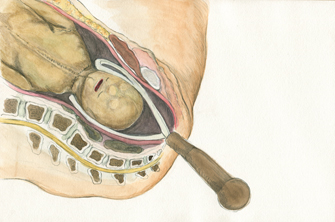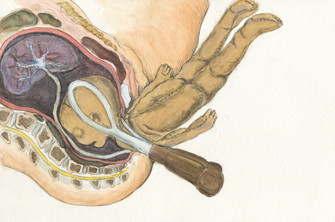THE OBSTETRIC FORCEPS
The RCPE obstetric dolls were used to educate medical practitioners learning childbirth techniques; most often to demonstrate the use of forceps, so a small explanation of the tool and its influence on the matter is in order. The original design of the forceps is accredited to Peter Chamberlen, a French midwifery practitioner who arrived in England in 1569. The forceps is a tool allowing for greater force in extracting the child from the birth canal than grip with the hand alone. The tool was conceived during a period when the disease rickets was particularly widespread, causing pelvic deformity that greatly obstructed delivery of the child, and was a major cause of the extremely high infant mortality rate at the time.1
The first appearance of obstetric forceps very similar to those of Chamberlen only came into general use after Edmund Chapman had made public the design in 1733 (after Chamberlen’s death in 1720). It was William Smellie who would take these designs and improve them significantly with such features as the ‘English lock’ and the pelvic curve, elements which are still incorporated in modern-day versions of the tool.2 ➡
NOTES | 1. Dunn, 1999 --- 2. Dunn, 1999


It is not known what Smellie's woman 'machine' looked like. Above are schematic drawings of the anatomy surrounding the womb and the positioning of the forceps on the baby's scalp, as may have been demonstrated with the help of the obstetric dolls. This would have been a particularly helpful practise for dealing with difficult labours: (l) occipito posterior presentation and (r) breech presentation | schematic drawings by Stef Lenk
